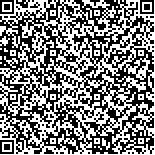董克松1,谢鑫新1,李雪1,刘伟亮2
1.上海航天电子技术研究所,上海201109;2.上海航天技术研究院,上海201109
摘要:
风云三号D星(FY-3D)微波成像仪采用10.65 GHz、18.7 GHz、23.8 GHz、36.5 GHz和89.0 GHz双极化通道对地表辐射信息进行测量,定标精度会直接影响遥感数据的准确性。影响定标精度的主要因素之一是成像仪系统的非线性特征,用物理参数—非线性系数表示。所以准确计算非线性系数是地面热真空定标试验的主要目的之一,在95—298 K范围内设置不同变温源温度点,每一个温度点对应一个非线性系数,这些非线性系数的平均值即是系统最终的非线性系数值。受系统原理和试验条件的限制,计算平均值时需要确定变温源温度的有效范围,目前使用的范围确定方法是设计师首先依据经验提出几组可能的温度范围,然后对比每个范围的定标结果,选出最优的温度范围。显然,这种方法很容易受到人为因素的影响,而且由于不具备遍历所有温度范围的试验条件,无法确定每个变温源温度点的有效性。为了准确获得非线性系数值,首先通过分析热真空定标试验数据证明非线性系数与场景亮温无关,然后提出了一种优化计算方法,采用t准则确定有效范围得到非线性系数值。对比优化前后两种方法的结果表明,新方法的非线性亮温拟合残差的平均值和标准差值以及非线性亮温的最大拟合值都减小了。由此可见,新方法在计算非线性系数时可以获得更准确的变温源温度范围,可以优化非线性亮温的拟合效果,并且将定标精度提高0.04 K,优化效果在10 GHz接收机以及环境温度较高时尤为明显。
Nonlinear characteristics of FY-3D microwave radiation imager and an optimal calculation method
Abstract:
The Earth’s radiation was observed by a microwave radiation imager (MWRI) on board FengYun-3D (FY-3D) satellite at 10.65 GHz, 18.7 GHz, 23.8 GHz, 36.5 GHz, and 89.0 GHz with dual polarization. The nonlinearity of this payload, as an important parameter in calibration algorithms, is represented by the nonlinear parameter from vacuum calibration ground tests. Therefore, an accurate knowledge on the nonlinear characteristics of MWRI is required to achieve precise remote sensing.The nonlinear parameter applied in the calibration algorithm is usually averaged over a set of, which is calculated at corresponding observed brightness temperatures in the range between 95 K and 298 K. A t-distribution test method is proposed to screen and further optimize the nonlinearity calculations in this study instead of conventional empirically filtering of before averaging. The t-method examines the validity of values at each observed brightness temperatures, and its effectivity is proven in this study.Nonlinear fitting brightness temperatures, as well as means and standard deviation of residual error, were calculated using empirically filtering method and the t-method to demonstrate the results in the nonlinearity calculation. The nonlinear parameter of MWRI is a physical parameter of the instrument, and the nonlinearity of up to 2 K at 10 GHz is mainly introduced by higher-order harmonic during detection. The nonlinear brightness temperature calculated using the t-test distribution method is improved by approximately 0.04 K with better fitting results than the ground tests, especially at 10 GHz.According to the results presented in this study, the nonlinear parameter is independent of observed brightness temperatures, and its nonlinearity is correlated to the instrument’s working condition. The proposed algorithm using the t-test distribution method can improve the nonlinearity fitting results and calibration precision. This method provides accurate nonlinear parameter for on-orbit calibration and can play a role in the total life cycle of MWRI after being launched.
Key Words:


